Its pouring Quad cores and now we’ve couple of Quad-core Android phones to choose from. The popular ones being Galaxy III, HTC One X, and Optimus 4XHD.
We recently had a handson review with the LG’s flagship Optimus 4x HD, we were more than impressed with what we saw, and proudly would call it LG’s best smartphone ever!
LG was the first to bring a dual core phone to the market, but it certainly wasn’t the best. They seem to have learned their lessons, and this time we see them recovering from the mistakes they made in the past.
Here are our impressions with the device after using it for couple of days.
The Hardware, Build quality & Design
Optimus 4x HD sports a Tegra 3 Quad-core CPU (actually it’s 5 cores) clocked at 1.5Ghz ARM-A9, and a ULP Geforce GPU and 1GB of RAM that ensures a smooth experience, always.
When you hold this phone, immediately you will realize something distinct about this phone — it’s the Design. LG is moving towards L-design. They believe we can get rid of the curves along the edges and achieve state of the art design. Well, we agree, the design would appeal to almost everyone and you can’t stop noticing the insanely thin 8.9mm formfactor. The design elements are similar against all LG’s new smartphones: L5, L7 and king of the ring: 4x HD. Where on one side SIII is all about curves of the pebble, LG has brought in a new concept which will definitely not disappoint users.
The Corning Gorilla glass on the screen and matte plastic durable cover at back makes this phone ideal for rugged usages. Couple of drops on the floor and you won’t notice any scratches. That’s something you can’t dream of doing with iPhones or in fact, with any Apple products.
The capacitive buttons at the bottom are themed in ICS like icons, and work as expected.
Flip the Optimus 4X HD over and you’re greeted by a vast, textured and removable plastic back cover gifted with an 8-megapixel autofocus camera mounted in a flush, machined aluminum pod and flanked by a single LED flash, and a shining LG logo.
Along the sides, you’ll notice dual aluminium strips that walk through the length bring a degree of sophistication to the device. Volume rocker on the side has sharp diamond cuts which adds to the phone’s premium feel.
The attention to detail on the speaker mesh both on the front and the rear are impressive. At 141g, its at par with the competition.
Beneath the battery cover is the NFC antenna embedded in the back of the door. LG seems to have got it all right.
Ports:
- 3.5mm audio jack
- micro-USB / MHL port,
Data / Internet / Connectivity
- HSDPA, 21 Mbps; HSUPA, 5.76 Mbps
- Wi-Fi 802.11 a/b/g/n, dual-band, DLNA, Wi-Fi Direct, Wi-Fi hotspot
- Bluetooth v4.0 with A2DP, LE
- Inbuilt 16GB storage, expandable with external SDcard upto 32gb
Support:
- Media Formats: DivX / Xvid / MP4 / H.264 / H.263 / WMV / MP3/ WAV/ WMA / eAAC+
Performance:
In the past, we’ve seen LG spoiling top-notch hardware with crappy software. Thankfully, the company’s mild Ice Cream Sandwich customizations on current-gen Optimus lineup have kept the stock performance (and experience) mostly intact. The 4X HD feels snappy no matter what you do. The performance is upto the mark not just on 4X HD but also all other 2012 Models I’ve seen so far. LG is about to re-write the impressions.
Here are the Quadrant benchmark scores:
LG Optimus 4x HD: 4,516
Galaxy SIII: 4,729
HTC One X: 4,345
SIII wins the benchmarks and Optimus 4xHD takes the second place beating One X. Of course, these are synthetic tests, real world performance may vary.
When it comes to games, most games in Google Play are designed for Tegra 3 processors, which is available in 4xHD and One X. Its no surprise that these devices will possess better gaming graphics than SIII, for such games. So in real world, 4x HD can have the best gaming graphics and performance out of all three.
In the SunSpider JavaScript test, which evaluates browser speed, the 4X scored 1,623.7ms (lower is better) — beating Apple’s iPhone 4S (2,181.6ms), and the HTC One X (2293.2ms), but not the S3 (1,508.9ms).
Battery Life
The most common impression about LG smartphones is the bad battery life it has to offer. I’m happy to see LG recovering from this. The battery life outperforms HTC One X’s 6hours continuos heavy internet usage, video playback test. 4x HD managed to deliver 7hours of operation.
2,150 mAh battery indeed does the job well, and the IPS display keeps the power consumed by the display to the minimum. Battery life is satisfactory, good enough for a day’s use. Don’t expect miracles here, smartphones don’t last for more than a day.
The Display
In plane switching or IPS has been a TV-only technology for a long time. LG has brought the IPS LCD technology to 4x HD, what this means is you get vibrant colors, great contrast and incredible viewing angles of upto 178 degrees. One could argue that well Samsung also promises those viewing angles with Super AMOLEDs. Well, the benefit of IPS LCD technology is that its power efficient. During ideal usage, IPS LCD screen can save 30-70% battery when compared to Super AMOLED at same brightness level.
One another advantage of the screen is that its incredibly Bright. Remember Optimus Black’s Nova display? Well, the technology makes it to 4XHD and what this means is that no matter how bright the sun is, you can still read phone’s screen easily. Great for outdoor reading.
So how good is the contrast vs Super AMOLED? To be honest, nothing offers better contrast than Super AMOLEDs. Black is insanely black. Here’s Galaxy Note and Optimus 4xHD head-to-head.
The screen is 4.7″, and sports a resolution of 1280×720. 1080p video playbacks on this screen are sharper and more vibrant than Galaxy Note, and is in-distinguishable from Galaxy SIII. For text / reading, this is definitely a better display than SIII’s pentile display, it packs more pixels giving it 312dpi. Pentile is weird for reading, probably you heard about it couple of times.
Here’s One X & Optimus 4xHD display under microscope.
Optimus 4x HD display possesses glare in bright light. In sunlight, when viewed at angles, you get a lot of glare. But this shouldn’t be a problem in real life scenarios. You would rarely want to see your phone at such angles, outdoors.
Sound / Audio Performance
Music freaks or Audiophiles like us wouldn’t buy a phone that lacks quality audio output. The Optimus 4XHD is Dolby certified, like most Android smartphones in the market. But that doesn’t tell the whole story unless you put it under the microscope. We decided to take it to a level further, a full audio spectrum test.
The Audio test setup:
We initially thought of doing the test Audiophile way: FLAC music. But then we realized a normal user would never bother about it. Music means MP3 for them. So to keep the tests very realistic, we used original CD-rips High-quality MP3s @ 320kbps. (Well MP3 is crap when compared to FLAC, but thats the industry standard).
- Player: PowerAMP (Hardware accelerated audio) with Bass / Treble Tone settings fiddled around.
- Phones: HTC One X, Galaxy SIII, Optimus 4xHD
- Audio Format: Stereo MP3, bitrate: 320kbps.
- Headphones: Audio Technica M50 (fully burned ~200 hours)
- Music tracks: Linkin Park, A.R. Rahman, Coldplay, Flo Rida, David Guetta

Results:
HTC One X
Certified by Beats Audio is a big thing, atleast on paper. With Beats audio, what you get in real life is not guaranteed to be great. We, along with several audiophiles, hate Beats audio tech and their headphones, but we tried to keep favorism aside for the test.
One X performed well with Dance and Party songs from David guetta and Flo Rida. But when it comes to playing classical and Pop songs from AR Rahman and Coldplay, One X was not at all pleasure to listen to. We believe One X is too much oriented towards bass and beats (i.e. bass-heads), it totally ignored the details we would like to hear.
Optimus 4x HD
The audio had flat response (and this is a good thing). There was no bass obsession, it sounded natural most of the time. The dance and party songs did feel as if they lacked the extra punch but details were not missed. Sound stage felt just right. Overall, the hearing experience was good.
Galaxy SIII
SIII performed well throughout the spectrum and we would rate it the best in this category. Fidelity was superb, and they performed well throughout the audio spectrum. They are not as bassy as One X, but still manage to provide higher details in music. They were perfect with Hard rock / Metal, if you’re Linkin Park fan, you would love the way this phone sounds.
Camera: Photo test
8MP rear camera with 1080p, standard spec for the phone in its class. When put to Test, lets see how it stacks up against HTC One X, Galaxy SIII.
Camera quality can matter for most, but if you are a photography enthusiasts, Phone is not what you look for. But these smartphones are getting more capable with every iteration. I normally shoot with my dSLR but its not the camera I always camera. Best camera is the one that you have it with you, at that moment.
To be honest, megapixel is a number game, it barely tells you what a camera is capable of. 4xHD has a great camera which is also snappy to use. Like SIII and One X, it can shoot:
- Continuous burst of 7 frames
- Shoot photo within video
- minimal shutter lag.
- Quick camera launch
The camera does a good job at shooting vivid photos with almost no lag. The ISO response is also good for camera in this class. Low light shots were good, thanks to the wide aperture camera has to offer.
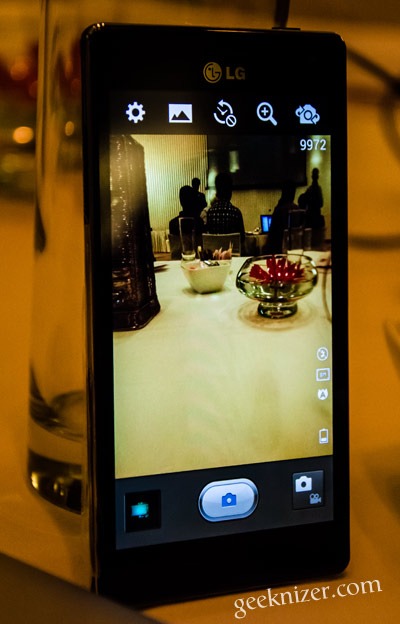
Daylight photos had plenty of detail and accurate colors. No punchy or artificial touch to them. The camera is able to capture incredible detail in Macro shots.
(click for larger image)
image credit: engadget.com
Camera: Video Test/Performance:
We compared videos head-to-head (all 1080p HD) from all three devices. A single frame was chosen to compare them. The results speak for themselves (click for full size):

4xHD produces natural video but with perfect contrast and retains dynamic aesthetics. SIII is artificially increasing saturation, brightness and luminosity that results in non-original feel to bright areas of the video. e.g. look at the light bulb, it looks overly saturated and blown away in the middle. One X also did oversaturate video, but other than that it performed well.
The OS Feel: Rendezvous with LG UI 3.0 on ICS
4X HD runs on Android 4.0 ICS with a custom LG UI 3.0. The device is butter smooth and you’ll never see a judder. That’s the kind of performance you expect from a quad-core CPU. The UI 3.0 is based on ICS Holo UI, with some great modifications, unlike HTC One X’s depressing sense modifications.
The launcher offers various transition animations and they look great. The lockscreen is inituitive, you can customize it suit your needs. You can add widgets like weather, calendar, reminders and more. Add shortcuts to frequently used apps right on the lockscreen. Swipe anywhere on the lockscreen to see a preview of the screen beneath it (screenshot below). This is unique, and we would love to see this lockscreen feature ported to other android phones.
The quick settings menu in the notifications tray is definitely a worthy feature. By default it lets you access the QuickMemo app (used to annotate what’s on the screen and save the result as a picture, Galaxy Note style), switch sound profiles, enable / disable WiFi and turn Bluetooth on / off and more. You can customize the toggles by enabling / disabling them.
The launcher adds several tweaks inherited from CM9.0 world and we like it more than Samsung’s TouchWiz, which is often clunky and boring. However, we still recommend using Launchers like Apex or Nova over any stock Launcher.
LG Apps
LG packs couple of unique apps with its custom ICS implementation. They got rid of all the bloatware and added the apps that we have desired for. We were impressed by the features they have to offer.
Share Screen to PC: Share your Phone’s screen to your desktop PC and control it remotely. This is basically a screencast application that streams your phone’s screen to PC via USB, or even wirelessly. We haven’t seen this feature in any Stock phone so far. Normally you need to root your phone and then pair with some third party tools which don’t deliver the smoothness this one has to offer. It delivers smooth video stream which appears to be atleast 20-25fps, at all times.
You can manage your homescreen, launch apps, games, SMS, call and do everything you normally do from your phone.
Camera, Gallery, Browser, Phone app: All these apps have been themed to match system UI, but underlying features are same as Stock ICS, which is the best part.
Email app: A perfect companion for your Exchange / office emails. Its like the one you see on samsung phones, with additional ability to split screens like tablets (fragments), when in landscape mode.
FM Radio: Radio app has RDS and is designed well.
LG Mobilie TV: For India, LG has partnered with media partners to bring Live TV and Video on demand for its Indian customers.
We are not sure if LG Mobile TV is coming for international users, but at the time of writing, this could be touted as the best offering with over 70 TV channels. The subscription would be free of cost for first 2 months. You can play and record any Live TV channel and playback any TV serial/soap from the past – One stop solution for all your TV viewing needs. The subscription price post 2 months free usage is rather unknown at this point. We’ve contacted LG for the tariff, watch this space for updates.
Media Home:
A great video player with ability to:
- Speed up or slowdown video playback (0.5x to 3x)
- Zoom into the video, while playing. A very unique feature we haven’t seen on any other device.
- Quick preview of videos.
Cell Broadcast: send / receive cell broadcast alerts,
LG Tag+ Read, write NFC tags, automate almost anything when a TAG is read. e.g. set profile to Car mode, launch google maps and vibrae phone when a NFC is read.
Memo: Note taking, suited for touch without stylus,
RemoteCall Service: lets an LG customer support rep control your handset for diagnostics. This is great incase something goes wrong or you are begineer at this phone.
SmartShare: Stream, share media content wirelessly from phone to phone, phone to TV, Phone to PC and vice-versa using DLNA.
SmartWorld: LG’s app store.
Other apps: Yahoo!’s Finance, News and Weather apps, Polaris Office.
S-Voice, LG Voice? Well LG doesn’t have one yet, but when I contacted them, they did anticipate that there’s one in the works. May be that would be available for the device in the future as an OTA. But I’m not really keen about it. I’ve used S-Voice, Siri and JellyBean’s Google Now search extensively. S-Voice is pathetic, Siri is tolerable and the best one is Google Now. Jellybean would arrive on Optimus 4xHD for sure, so I’m all game for it.
Price
At $590 for US, €490 in UK and Rs. 35,000 in India, this is definitely among the most decently priced quad-core phone you can buy.
Verdict
If you love simplicity and yet believe in power and performance, this phone is for you. If you’re all show off, go with something else — Wear those shiny Beats headphones and buy that HTC One X. But if you care about features, details, and quality interface, LG Optimus 4xHD (and even SIII) are for you. Some of the features like ability to stream screen to PC, LG TV are totally unique to this phone. Don’t get us wrong on the style, the phone has that premium feel to it, but it’s more about what you get inside.
Small things can make a big difference for the individual user – things like design and feel, advanced software features and even interface customizations. The Ultimate choice would boil down to your personal choice, all three are capable phones and have good features to offer. But when it comes to price point, Optimus 4xHD is definitely way more appealing in its class.
LG has set the expectations right, we hope they continue to bring quality smartphones to the competition.
We write latest and greatest in Tech Guides, Apple, iPhone, Tablets, Android, Open Source, Latest in Tech, subscribe to us @geeknizer on Twitter OR Google+ or on Facebook Fanpage:
loading...
loading...

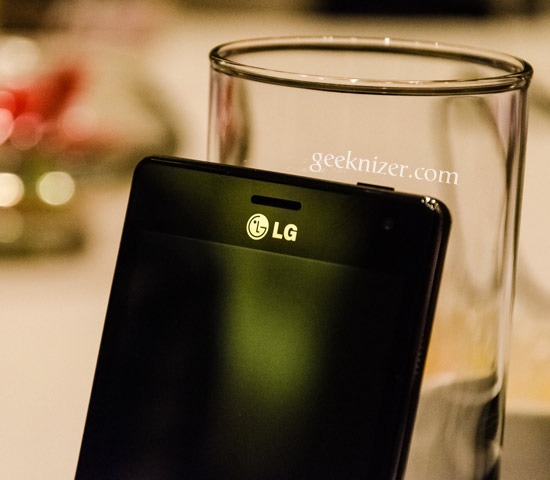
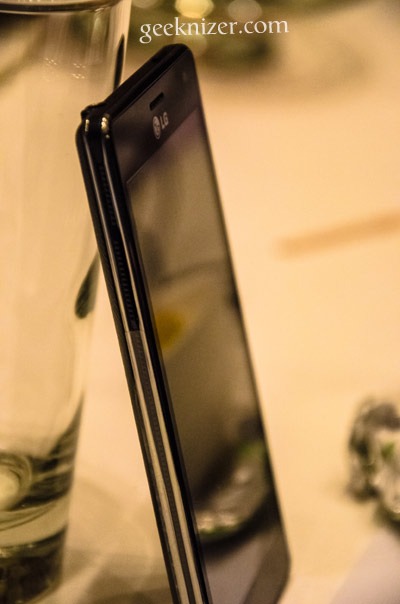
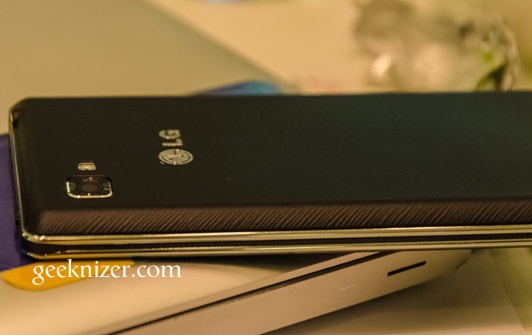
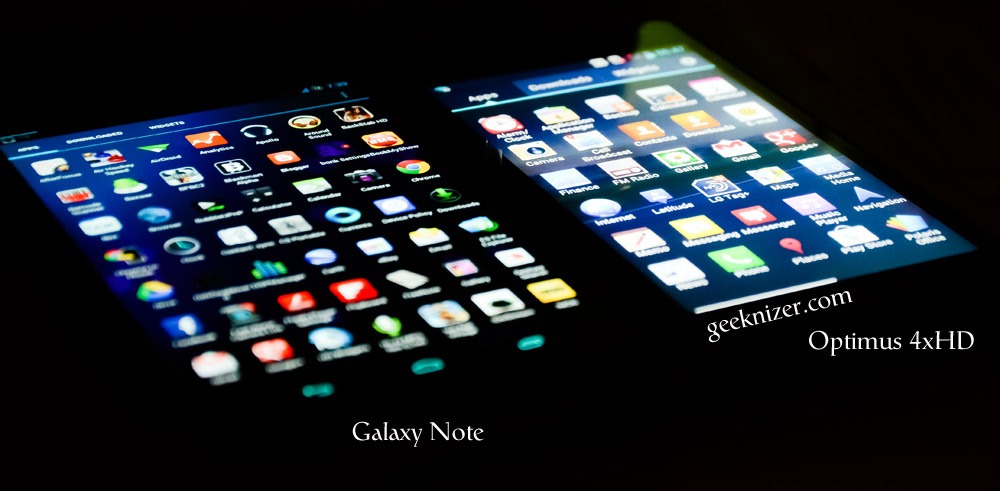
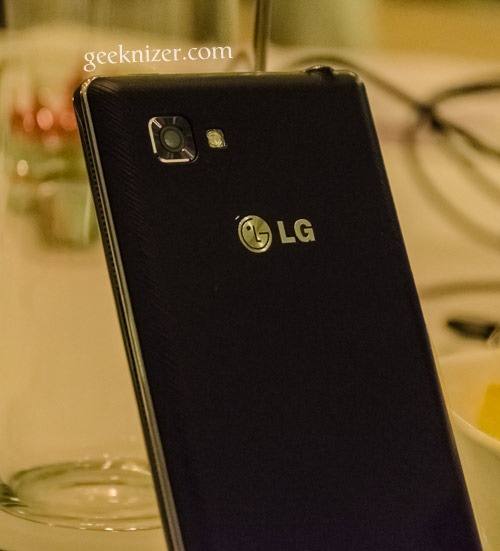

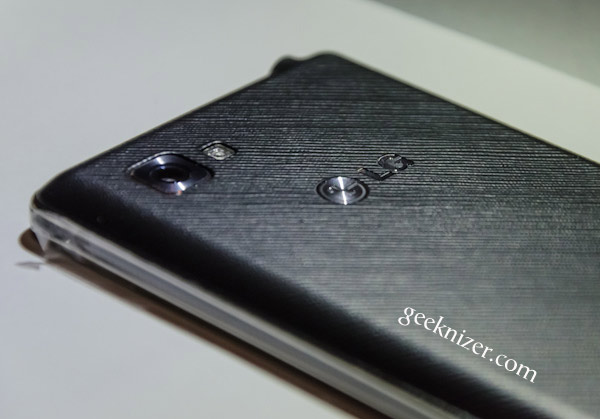
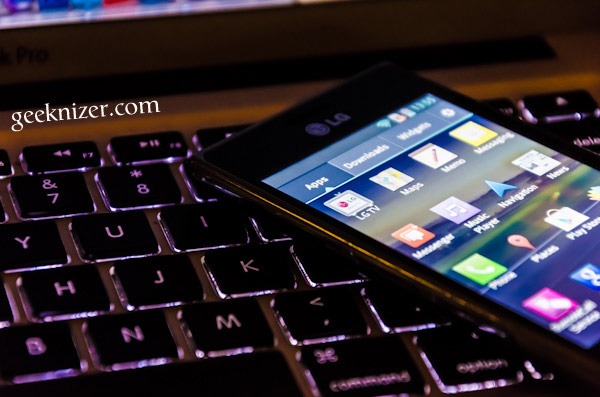



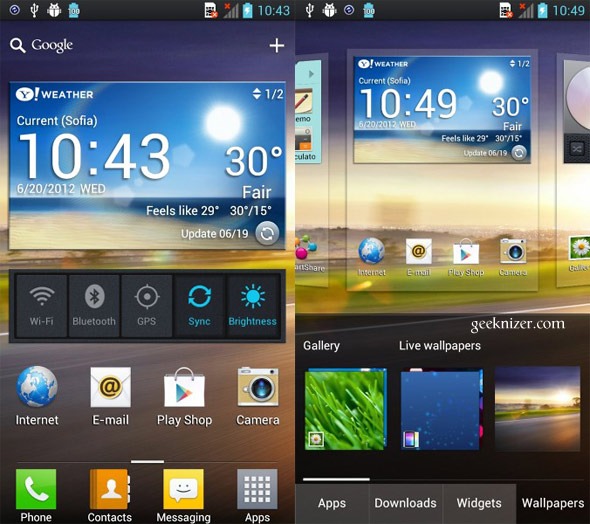
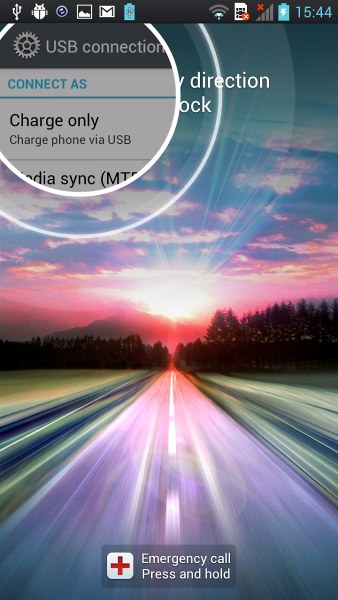
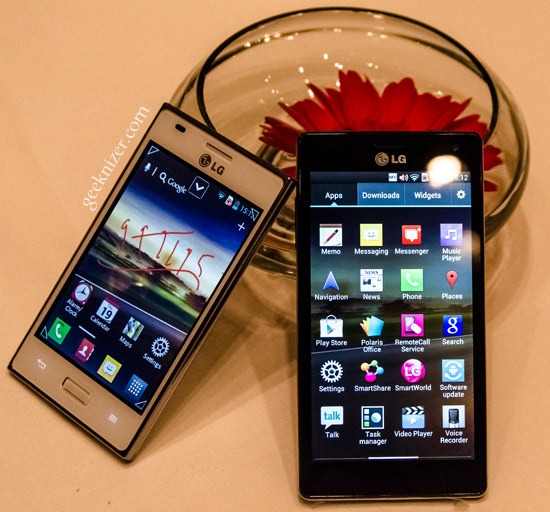
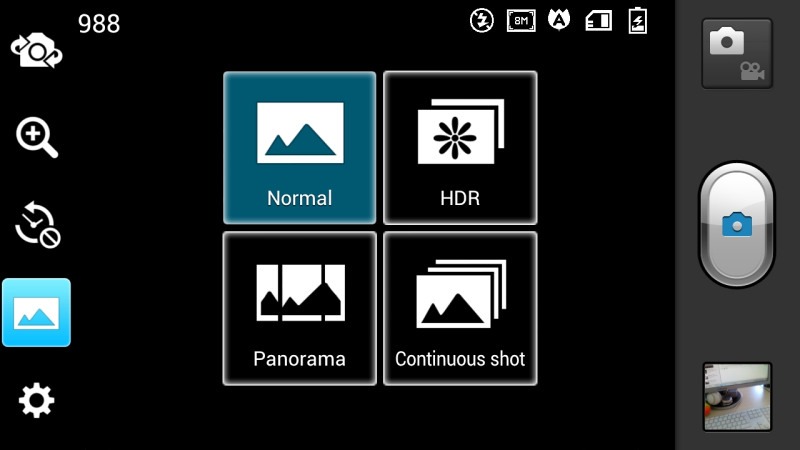



Optimus 4X HD is probably the first phone from LG that I’m really liking. The flat UI looks really good. I hope that they don’t screw it as they did with Optimus 2X, which is still stuck with Gingerbread.
loading...
loading...